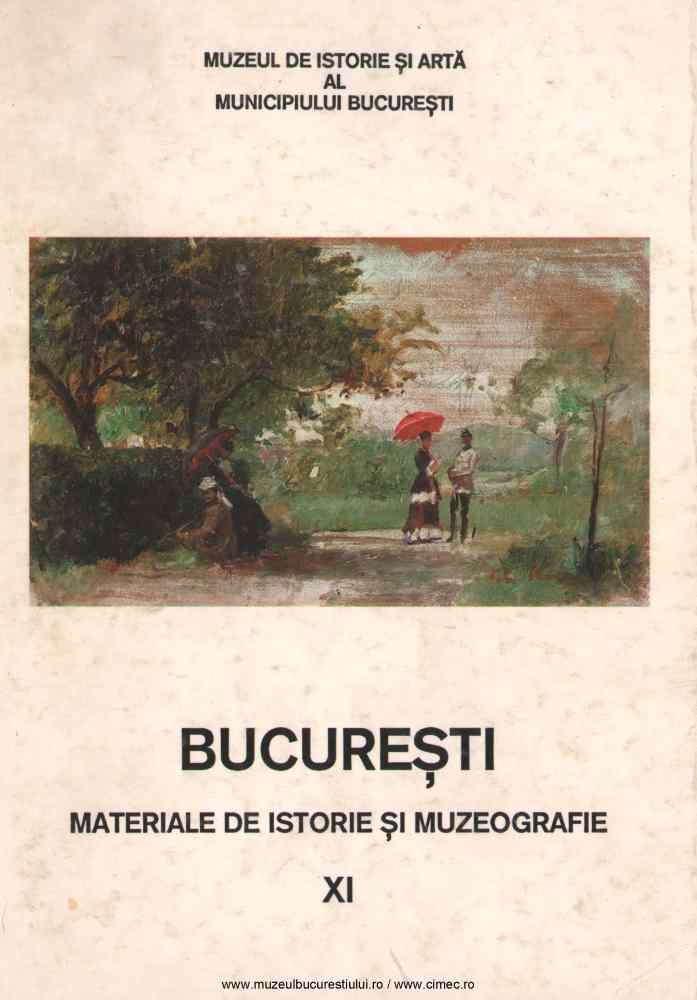
Uniformele cetăţenilor-ostaşi din Garda Naţională
| Autori |
|
| Secţiunea |
|
| Limba de redactare | română |
|
Descriptori
|
|
| Excerpt | The National Guard was founded in 1866, two months after the abdication of Prince Alexandru Ioan I from the throne of the Romanian Principalities. It was organized in order to defend the citizens' rights as well as to protect the new government against any reaction of the loyalists. This very year (1991) it is celebrated the Guard's one hundred and twenty-fifth anniversary. Citizens from every social level enthusiastically rushed to volunteer. It is not without interest to have a look on the roll in order to obser1e the variety of occupations of the volunteers. These range from well-known politicians, editors, newspapermen, artists and actors to no less celebrated owners of restaurants or hotels, drugstores or bookshops. But the strength of the Guard was given by the merchants, tailors, shoemakers, carpenters, masons, coachers, tanners, bakers, butchers, etc. In spite of the differences between their status and fortune, all the members of the Naitional Guard were, first of all very fond of their uniform. This uniform was, indeed, very beautiful and full of originality. lt was composed of a single-breasted dark blue frock. coat with yellow pipings, buttoned with seven unmarked brass buttons. The trousers were of the same color and have the same pipings, except for the staff officers who had red trousers. The hat was of black felt with the brim raised on the right side and pinned with a cockade with the colors of the flag: red, yellow and blue. Red cock plumes were fixed under this cockade. Unlike their comrades, the staff officers had white plumes while the physicians had black ones. Only the lieutenant-colonel and the colonel had three-colored plumes. In front of the lacquer ribbon of the hat was placed the number of the legion to which belong the officer or the trooper. This number was of polished brass. Only the staff officers were allowed to wear the arms of the Romanian Principalities instead of that number. Only the general had a cockade hat trimmed with white feathers; he had also a golden stripe on the collar and double golden stripes on his red trousers. · The belt was also of lacquer with a brass buckle mounted with the symbol of the Liberty rounded by the words: Honor, Country, Liberty. In full-dress the officers had golden belts with the same buckles. Only the lieutenant-colonel, colonel and the general used a three-colored sash around their waist instead of the common belt. There were no epaulettes for designating the hierarchy, as in the regular army, but the differences between the ranks were seen on the sleeves. The non-commissioned-officers had red woolen chevrons on the cuffs while the officers had golden lace. The staff officers were allowed to wear golden aiguillettes on the right shoulder. They had also their cuffs and collars of black velvet. All the members of the National Guard, from general to the last man, had red ties knotted beneath the collar. The officers had lacquer sword knots for undress and golden sword knots for lull-dress. It was fashionable for the troopers and the officers alike to have their portraits taken in full-dress. That's why the photographic studios of Bucharest and the other important towns of Romania were simply crowded by uniformed customers from the National Guard. Unfortunately, this garb was in use for only six years, until 1872, when the National Guard was moved from the Department of the Interior under the jurisdiction of the War Department and was uniformed on the regular army style. |
| Paginaţia | |< << 217-226 >> >| |
| Descarcă fişierul | |
| Titlul volumului de apariție | |
| Editura | Publicat de: Museion |
| Loc publicare | Bucureşti |




